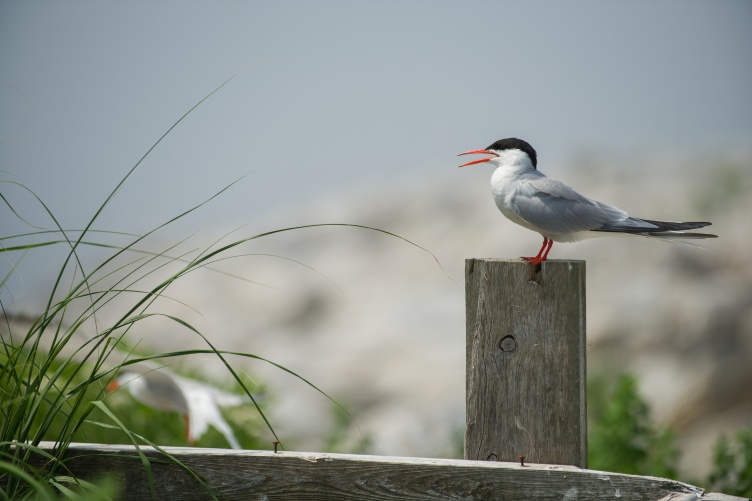UNH Researchers Study the Effects of Climate Change in Gulf of Maine
Photo courtesy of UNH Today.
November 29, 2022
DURHAM – University of New Hampshire (UNH) researchers are hopeful that a million-dollar grant investigating native fish and bird species in the Gulf of Maine may help explain how the ocean will respond to climate change.
The five-year project is funded in part by a recent grant from the Office of Naval Research and the National Oceanic and Atmospheric Administration. Researchers will track the movements and diets of the cod and the common tern, important predator species off the coast of New Hampshire and southern Maine.
Nathan Furey, an assistant professor of biological sciences at UNH and a principal investigator for the grant, said that this information may help communities manage fisheries and other coastal resources better as the planet warms.
“Our local ecosystems are in flux and we need to understand the consequences of such change, and improve our ability to predict what further changes are likely,” Furey said.
The 2021 New Hampshire Climate Assessment established that the changing ocean threatens ecosystem services and livelihoods, and the Gulf of Maine is changing exponentially faster than the rest of the ocean.
From 2004 to 2006, the Gulf of Maine warmed faster than almost every other body of water on the planet, according to Dr. Andy Pershing, GMRI’s Chief Scientific Officer, in a video. This warming is due to man-made global warming, melting in the arctic and changing circulation in the ocean. The Gulf of Maine is in a unique part of the global circulation, right at the boundary of cold and warm currents. A little bit of warming causes the warm currents to “win,” and the gulf warms very quickly.
“If we figure out how to deal with the challenges of warming in our ecosystem, because we’re experiencing these conditions at a faster rate than other places, the solutions that we develop here can have really global benefits,” said Pershing.
The research at UNH spans across the College of Life Sciences and Agriculture, College of Engineering and Physical Sciences, School of Marine Science and Ocean Engineering and the Shoals Marine Laboratory. UNH researchers also partnered with the Northeastern Regional Association of Coastal Ocean Observing Systems (NERACOOS) and the Gulf of Maine Research Institute (GMRI) on the project.
Cod and tern are important predator species in the Gulf of Maine, said Dr. Graham Sherwood, research scientist at GMRI and partner in the project. Cod live toward the bottom of the ocean, while tern collect prey from the surface waters. Studying both species’ movements and diets provide researchers with information on what organisms are available near both the bottom and the surface, which can then influence conservation tactics.
“In order to manage species effectively, we need to understand how they respond to a variety of potential drivers in the ecosystem and account for these in management plans,” Sherwood said.
Researchers will integrate passive and active acoustics, which use underwater sound recorders to monitor wildlife, to measure marine biodiversity in the areas where cod and tern are tracked. They will also use environmental DNA, or eDNA, to measure DNA released from different species in the gulf. To study the diets of cod and tern, researchers will analyze gut and fecal samples.
“This integration among techniques, species and locations will be powerful in understanding how different perspectives on marine biodiversity may respond to continued environmental change,” said Furey.






















Edith Gioseffi • Dec 2, 2022 at 4:19 pm
It is very reassuring to read about this five year project. I did not know about the dire threat to the Gulf of Maine and am very glad to learn that resources and researchers are made available to find some answers.